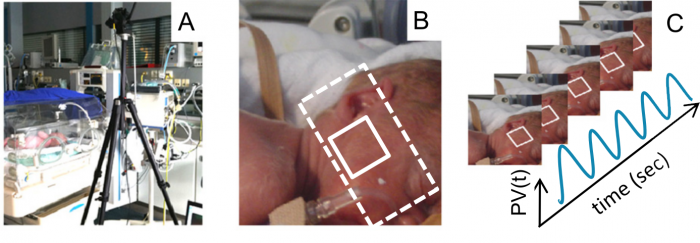Projects:2016s1-105 Non-Contact Photoplethysmogram
A photolethysmogram is an optical measurement of the volume of blood in a section of the body, which can subsequently be used to extract someone's pulse rate. This is normally achieved using a contact sensor incorporating a light source and a photodetector, but can also be achieved with a non-contact camera and ambient illumination.
Group Members
Jacob Shearer (a1608515)
Supervisors
Dr Brian Ng, Mr Vladimir Perejogin (DSTG), Dr David Booth (DSTG)
Introduction
Project Aims
This project aims to explore the current work in non-contact photplethysmography methods. The primary deliverable of the project, for this year, will be a proof-of-concept Android app that can extract the pulse rate of a user using the front or rear camera of a smartphone. However a lot of the real value of this project will be in exploring and characterising the current research being done in this area and the development of a research framework that can be used to answer further questions in the future. There will also be a real interest in the computational complexity of any potential methods due to the interest in producing a real-time application.
